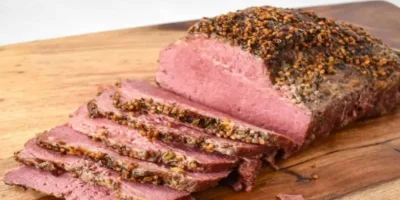How do you temper chocolate correctly? Our guide explains the 3 important steps to temper couverture chocolate, and what to avoid for a perfect result.
Is it difficult to work with chocolate?
Chocolatier Michael Recchiuti says that everyone, including the experts, finds chocolate intimidating at first. “Chocolate is an organic medium that has only a few ingredients, but [is] extremely complex in its crystal structure,” he says.
“Practice and patience is the only way to get a good process and positive results. If you muck it up, you can always melt the chocolate again and try again. It is worth the frustration. All of us at Recchiuti go through learning curves every day, that’s what makes working with chocolate so interesting. Chocolate is like music: Practice will allow for better results and [a] higher level of comfort the more you work with it.”
Why does chocolate need to be tempered?
Tempered chocolate has great appeal and a smooth surface. Tempered chocolate has a shiny, flawless appearance. It feels firm and breaks out with a snap when you bite into it and it melts gently into your mouth so you can fully enjoy the taste. Slow heating and cooling of melted couverture chocolate while stirring brings it into the right state.
If chocolate is not properly tempered, the cocoa butter crystallization is uncontrolled and uneven, resulting in an unattractive chocolate that is dull or has white streaks.
Loose chocolate can be rough or grippy and has a cakey, almost chewy texture. And it is more susceptible to heat and moisture, melting more easily and spoiling faster. Some simple candy recipes don’t require tempered chocolate. However, sweets like truffles always require it for the best result.
NOTE: Only natural butter cocoa must be tempered!
Easy recipes to make chocolates
The 3 steps to temper chocolate correctly
Below are the 3 steps to temper chocolate couverture:
1. melting
Heat the temperature to around 40.0 C degrees, so the original couverture chocolate block will melt. It is recommended to use insulated warm water to melt the couverture. However, it is important to keep the water away from the chocolate…if you get water into it, it is very hard to fix and process.
How to make marshmallow: step by step guide
2. cooling
The temperature is cooled down to 25.0C degrees. There are various cooling options. For example, cold water running in a cycle in an outer pot, colling the inner pot that contains the couverture, or you can use natural cooling at air temperature. A third way is to place the couverture in a cold room or a strictly controlled refrigeration space — but you should keep a very close eye on the thermometer in the chocolate.
3. heating
Warm up to 30.0C degrees. Do not heat the temperature too high, otherwise the taste of the chocolate will be damaged; and you will have to repeat the process all over again from the start.
The tempered chocolate can be used for molding, coating, dipping, etc., for various chocolate products.
UPDATE: Thank you to reader Danielle Ashley for noticing that the decimal point was missing in all three temperatures when the article was originally published! It should of course have been 40.0C not 400!




